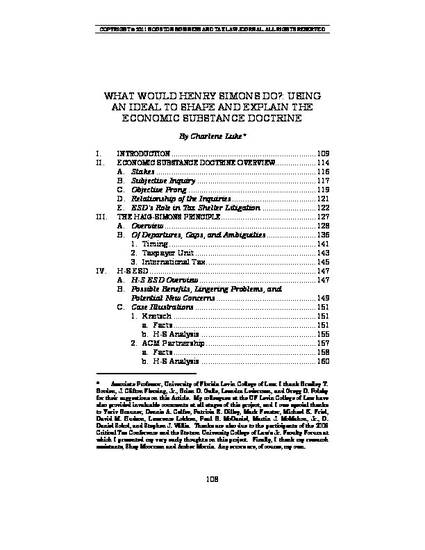
The law and policy governing tax shelters is incomplete, sometimes contradictory, and occasionally incoherent. Indeed, consensus has yet to emerge even as to which transactions should bear the tax shelter label. Often reform efforts are grounded in theories that are largely external to tax law—for example, economic theory relating to incentives. Fewer approaches rely on intrinsic tax policies, including that most fundamental of income tax principles—the Schanz-Haig-Simons income concept ("H-S"). Under H-S, an income tax base should be expansive, requiring inclusion of an individual's increases in wealth and allowing reductions only for non-personal costs that reduce wealth. This Article seeks to open a line of inquiry into the possible benefits of incorporating H-S into the tax shelter discussion. Specifically, this Article discusses the potential results of injecting H-S into the debate over the Economic Substance Doctrine ("ESD")—a debate that seems unlikely to diminish in spite of the recent codification of the ESD.
